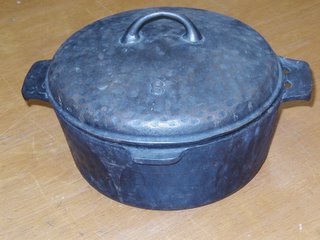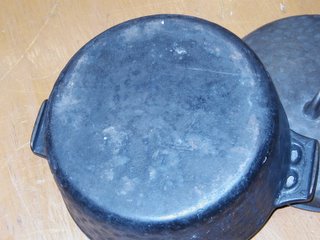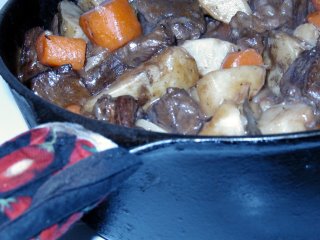Thanksgiving is one of those holidays where food is almost as important as the meaning behind the holiday. I’m thankful to have been raised in a family that agrees with me. It doesn’t matter which direction we travel -- south to one of the in-law’s houses, or to my sister’s in San Jose -- a roasted turkey awaits us.
A barbecued turkey at Thanksgiving -- or any other time of the year -- is simply divine. It's browned to perfection in the barbecue. Instead of filling the house with the pleasant aroma of a roasting turkey, you’ll be inviting all of your neighbors as its scent wafts over the fence into their yard. Better set extra place settings just in case.
BARBECUED TURKEYI find that a fifteen-pound turkey is about right for the barbecue. But the important question is this: Will the turkey fit under the dome lid? On their
Website, Weber advises that turkeys over 24 pounds may not fit under the lid of their barbecue kettles.
Completely thaw your turkey before grilling. It should be thawed in the refrigerator. A 15-pound turkey takes about three days to thaw. Thaw the turkey on the lowest shelf and place it over a pan to catch juices. Never thaw a turkey at room temperature.
I don’t recommend stuffing the bird. Instead, place the stuffing into a baking pan and place the pan on the grill (or in a Dutch oven) during the last 45 to 60 minutes that the turkey is on the grill. Use a thermometer to test the stuffing for doneness. It should reach 165 degrees. If the stuffing isn’t hot enough, leave it on the grill while the turkey cools. A colorful alternative is to stuff green, red and yellow bell peppers with your favorite stuffing. Grill alongside the turkey.
1 (15 pound) turkey, thawed if frozen
Olive or vegetable oil
Salt and pepper to taste
1 chopped medium onion
2 stalks diced celery
2 diced carrots
Consult the instructions for your charcoal barbecue kettle before proceeding. The amount of needed charcoal briquettes will vary slightly from model to model. This recipe is written for the
Weber 22-1/2-inch Bar-B-Kettle™ Grill.
Ignite 50 charcoal briquettes and let them burn until they are barely covered with ash, about 20 to 30 minutes. While charcoal is burning, rinse thoroughly turkey under running cold water and pat dry. Rub skin with oil. Season with salt and pepper inside and out. Place turkey, breast side up, on a baking rack.
When charcoal is ready, place an even number of briquettes on the left and right sides of the lower grill. Place a drip pan between the charcoal. Position the cooking grill with the handles directly over the charcoal. This will make adding fresh briquettes easier. Adjust the top and bottom vents to maintain the barbecue at 325 degrees.
Place the turkey (in the baking rack) on the cooking grill. Make sure to center the turkey directly over the drip pan. Cover barbecue kettle. Add 7 charcoal briquettes to each side each hour. A 15-pound turkey is done in about 3 hours. During the last hour of grilling, add onion, carrot and celery to drip pan if desired to flavor drippings. You don’t have to turn or baste the turkey.
When the thermometer reaches 170 degrees in the breast or 180 degrees in the thigh, remove turkey from the grill. Let cool about 20 minutes before carving. The meat just under the skin will be pink. Figure about 1 pound of turkey (with bones) for each person.
Strain vegetables into a pint-sized measuring cup. Skim fat from drippings. Discard vegetables. Reserve 1/4 cup of the fat for the gravy, and discard the remainder. Serve sliced turkey with camp mashed potatoes and turkey gravy.
According the
Weber Website, unstuffed turkeys will take:
10-11 pounds -- 1-3/4 to 2-1/2 hours
12-14 pounds -- 2-1/4 to 3 hours
15-17 pounds -- 2-3/4 to 3-3/4 hours
18-22 pounds -- 3-1/2 to 4hours
23-24 pounds -- 4 to 4-1/2 hours
This article was originally posted on www.Suite101.com in November 2000.













 The inside of the lid. Note the rust. The oven is in very good shape.
The inside of the lid. Note the rust. The oven is in very good shape.